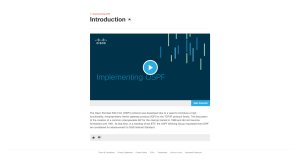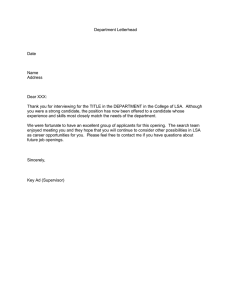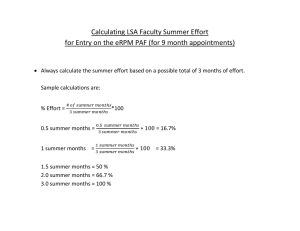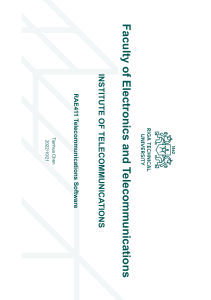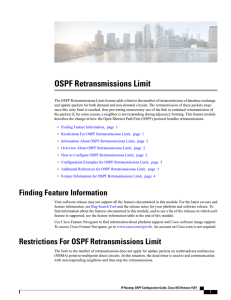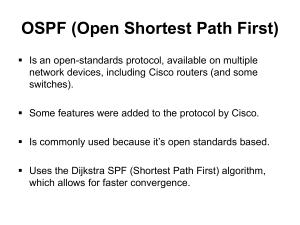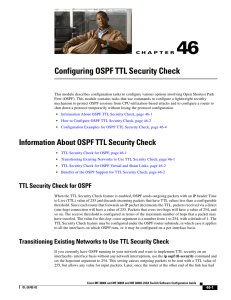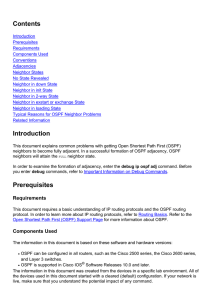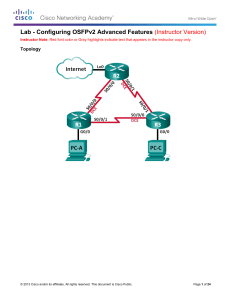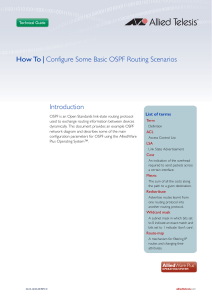Module Summary
advertisement
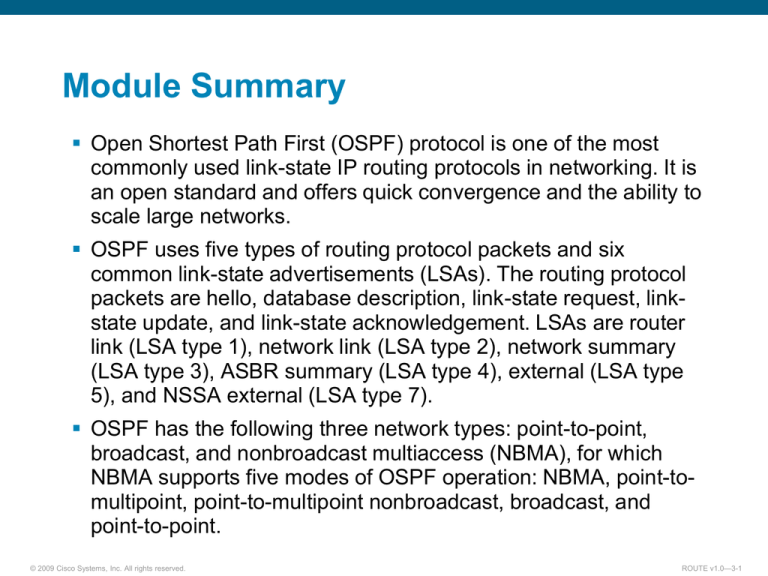
Module Summary Open Shortest Path First (OSPF) protocol is one of the most commonly used link-state IP routing protocols in networking. It is an open standard and offers quick convergence and the ability to scale large networks. OSPF uses five types of routing protocol packets and six common link-state advertisements (LSAs). The routing protocol packets are hello, database description, link-state request, linkstate update, and link-state acknowledgement. LSAs are router link (LSA type 1), network link (LSA type 2), network summary (LSA type 3), ASBR summary (LSA type 4), external (LSA type 5), and NSSA external (LSA type 7). OSPF has the following three network types: point-to-point, broadcast, and nonbroadcast multiaccess (NBMA), for which NBMA supports five modes of OSPF operation: NBMA, point-tomultipoint, point-to-multipoint nonbroadcast, broadcast, and point-to-point. © 2009 Cisco Systems, Inc. All rights reserved. ROUTE v1.0—3-1 Module Summary (Cont.) The configuration of OSPF is a two-step process: – Enter the OSPF configuration with the router ospf command. – Use the network command to describe which interfaces will run OSPF in which area. Route summarization reduces OSPF LSA flooding and the routing table size, which reduces memory and CPU utilization on routers. The OSPF area types supported are backbone area, normal area, stub area, totally stubby area, and not-so-stubby area (NSSA). Stub area techniques improve OSPF performance by reducing the amount of LSA flooding. OSPF supports two types of authentication: – Simple password (or plaintext) authentication – MD5 authentication © 2009 Cisco Systems, Inc. All rights reserved. ROUTE v1.0—3-2 © 2009 Cisco Systems, Inc. All rights reserved. ROUTE v1.0—3-3
